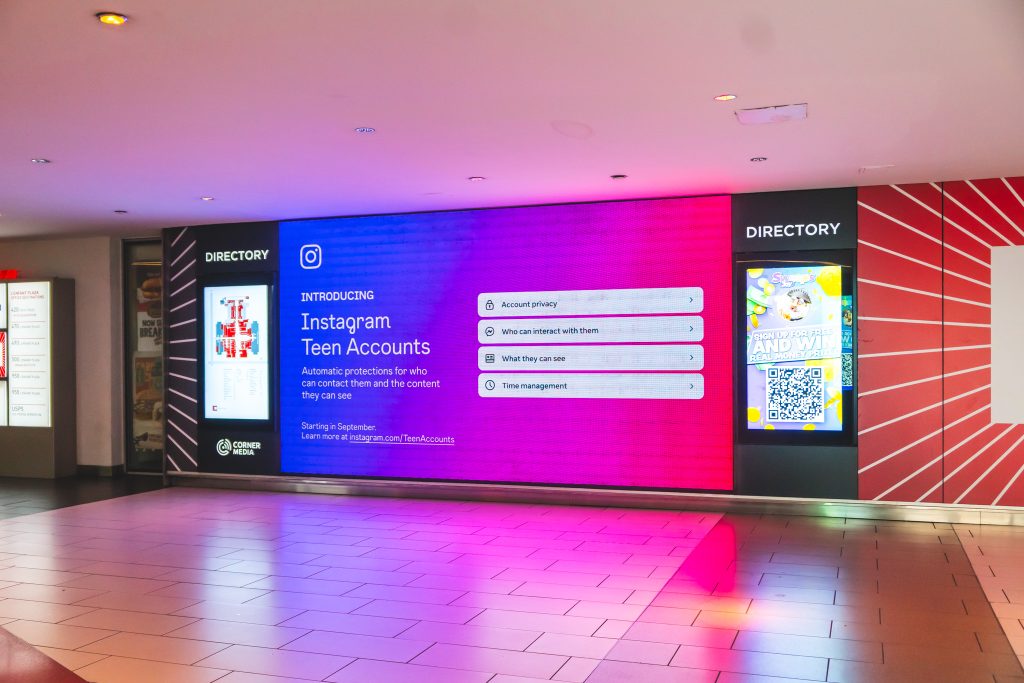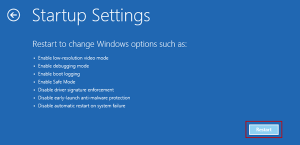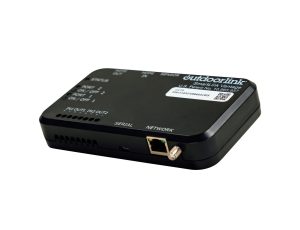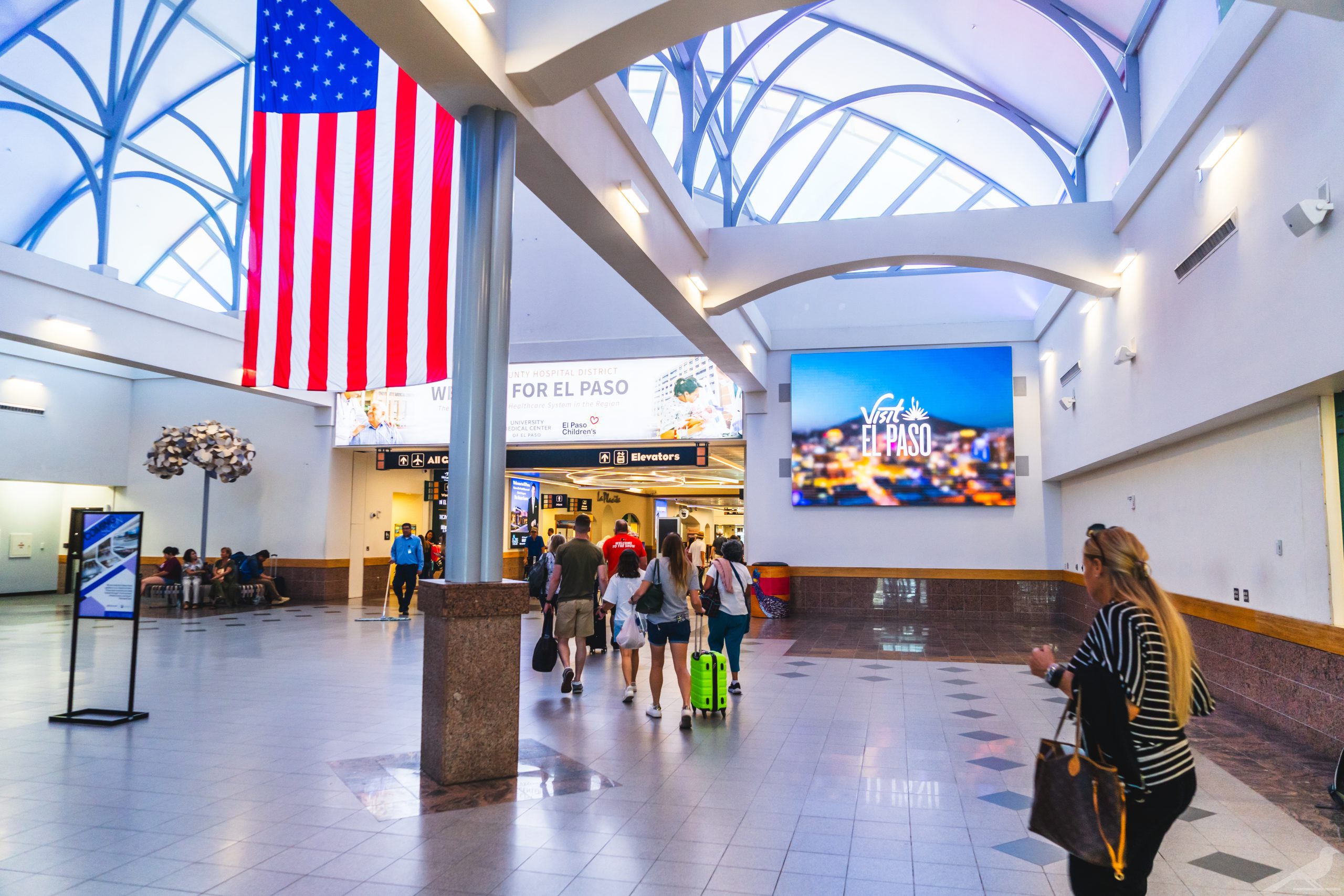Let’s say you are an operator managing all place-based advertising screens in airports or transit hubs. Your goal is to ensure every display is captivating and flawless, drawing the eyes of passersby. It is also your goal to catch any issues with the screens before anyone else does.
Imagine an upset client calling and saying they found the issue before you. That reflects poorly on your service level and disrupts the seamless user experience you try to provide. This scenario underscores the importance of staying ahead of the game and taking all the necessary steps.
In the world of Out-of-Home (OOH) advertising, uptime is crucial. Ensuring every digital display is functioning perfectly around the clock is vital. Anytime a place-based digital ad is down, it costs money. Anytime one is up, it makes money. This is why any operator must know screens are running consistently and dependably. This is also one of the biggest day-to-day struggles of any DOOH operator. Maintaining uptime means maximizing reach, engagement, and ultimately, return on investment.

Understanding Uptime in Place-Based Advertising
Before we continue, we must fully understand uptime in DOOH advertising. Uptime refers to the total time and percentage of time a digital display, such as a place-based digital network or digital billboard, is up and running. It measures the amount of time an ad network is fully operational but is dependent on the network’s reliability for its accuracy.
Maintaining this uptime is crucial for two main reasons.
- Network Reliability: This ensures that ads are consistently displayed according to the schedule. This consistency is key to building trust and brand recognition.
Advertisers rely on Digital OOH networks to reliably deliver their messages. The more downtime a player has, the more likely advertisers are to notice and become aware. This could diminish a company’s reputation and impact future sales.
- Customer Satisfaction: Advertisers expect their message to be displayed without interruption, and downtime can lead to lost impressions and impact.
A well-maintained digital ad network enhances the overall experience for consumers. It maintains the advertiser’s reach and frequency goals and creates a more impactful campaign overall, ultimately keeping your customers happy. Because when a customer isn’t happy with the outcome, no one is happy.
Now that we understand what uptime means, let’s keep reading.
Common Challenges in Maintaining Uptime
Despite the best efforts, maintaining uptime doesn’t come without its challenges. Let’s take a look at some challenges:
The most common challenges include player error, input/output issues, dark or frozen screens, and screen glitches. A system glitch could happen when a software bug causes the screen to show no input, freeze, reboot, or display distorted content.
Sure, those are all internal factors, but there are also external factors that affect uptime, like power outages, weather, or hacks/changes of channels, resulting in the loss of what’s playing on your network.
After a power outage, screens need a full reboot when the power is restored, similar to a Wi-Fi reboot at home. During this time, advertisers might not know the accurate downtime, making reporting challenging.

Weather can be a challenge in maintaining uptime. Extreme temperatures can cause components to overheat or freeze, moisture from the rain or snow can cause short circuits or corrosion, and strong winds can physically damage screens, leading to misalignment or breaking.
High-traffic consumer areas, such as a restaurant or retail setting, present additional challenges with people changing the feed or input at their will. For example, imagine you’re at a restaurant watching a sports game and you request a channel change. The player might still report that it’s running the intended advertisement, but in reality, the screen displays something different due to the input switch. This can lead to inaccurate reporting and damage the effectiveness of targeted digital advertising efforts.
Manually monitoring and fixing issues across multiple locations can be difficult. Place-based networks are in locations where cameras are not permitted, so to truly know if they are working, the company sends personnel to lock eyes on the screen. Because many of these are done weekly, monthly, or quarterly, this tactic may not detect issues immediately, leading to prolonged downtime. Not to mention, keeping track of a large number of screens across different locations requires significant resources and coordination.
Vantage by Outdoorlink: A Solution for Ad Reliability
Vantage by Outdoorlink alleviates the need for camera monitoring and in-person site confirmation that digital content is running accurately. It also enables remote troubleshooting to resolve issues before advertisers become aware.
This cloud-based application utilizes a secure cellular network to provide centralized management, remote control, and verification of advertisements. Positioned between the player and the screen, it fully monitors both input and output, ensuring display performance. In simple terms, it looks at the system from player to physical screen to confirm it’s working as it should.
Features of Vantage for Uptime Management
Vantage provides third-party integrity by examining all the system components and ensuring that the cabling and monitors perform properly. This device was developed to ensure system integrity for digital kiosks, street furniture, transit hubs, airport digital screens, etc.
Vantage can instantly alert the operator via text message or email while using real-time monitoring. This allows operators to proactively notify advertisers of specific downtime, create accurate make-good options, and correct issues quickly to alleviate frustration. Vantage can also provide screenshots of what is playing, on-screen verification, proof of performance reporting, reboot capabilities, and, most importantly, give advertisers peace of mind with a blind audit.
The convenience of managing digital screens through a mobile app is having access to effortless rebooting and problem-solving from a desktop or mobile device. Using a mobile device creates a world of flexibility for automated troubleshooting solutions from anywhere in the world.

Benefits of Using Vantage for Place-Based Ad Networks
A consistent issue with any digital screen network is overall distance. Any OOH company that manages more than one network isn’t going to have it in their backyard. They are constantly trying to monitor networks across the country or around the globe. It is impossible to lay eyes on each placement every day.
With traditional OOH, monitoring was always done via night rides and updated photos. With place-based that means finding someone to go and walk properties like airports, retail environments, etc. Trying to find trustworthy local personnel and managing security hurdles are added day-to-day headaches that are often unnecessarily time-consuming.
Vantage minimizes downtime and reduces repair costs by notifying operators when an issue occurs in real-time. This allows the operators to respond quickly and efficiently.
This device also allows them to reboot the components remotely and eliminate a service call. This immediate response reduces downtime. Outdoorlink’s proprietary, screen-mounted sensor is also suitable for display of any size.
Measuring uptime is crucial for ensuring the reliability of Out-Of-Home advertising campaigns. High uptime ensures ads are consistently displayed, maximizing their impact and effectiveness. Vantage is crucial in maintaining this by providing real-time monitoring, remote troubleshooting, and more. Vantage helps advertisers achieve successful campaigns and maintain customer satisfaction by ensuring high uptime.
Experience the benefits of Vantage firsthand by scheduling a virtual demo today. See how Vantage can enhance your OOH advertising efforts.
Click here to check out our blog on Large-Scale OOH Digital Networks!
